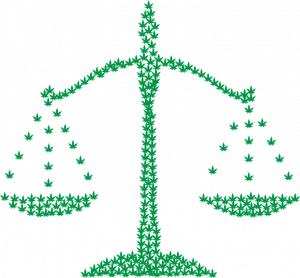The US drug trafficking law prohibits and penalizes illegal manufacture, importation, transportation and selling of unlawful controlled substances like heroin, marijuana, methamphetamine, cocaine, and other illegal drugs. Although drug laws differ from state to state, federal drug laws like the Controlled Substances Act supersede state laws. This act allows feds to enforce drug laws in any jurisdiction. 
Federal agencies work with both local law enforcement and the state for effective control over substances deemed to be dangerous to society and individuals. Drug trafficking offenses generally range from 3 years to life imprisonment. Dallas lawyers for drug trafficking defense can help you with these kind of cases.
When placing illegal substances in their control category, the Control Substances Act considers various factors. They include:
- Scientific knowledge of the drug.
- Scientific evidence of the drug’s pharmacological effects.
- Information about pattern abuse and the drug’s history.
- Relative or actual potential abuse of the drug.
- Public health risk.
- If the substance is involved in making other controlled drugs.
- The likelihood of the drug causing psychological or physical dependence.
The act establishes a scheduling system or classification for drugs. They include:
Schedule I drugs.
The potential for misuse of these drugs is high. They are considered unsafe regardless of whether they are supervised by medical professionals. They include Quaaludes, LSD, GHB, marijuana and heroin.
Schedule II drugs.
These drugs also have a high potential for addiction and misuse, however, they can be used in the US with strict controls. They include morphine, methadone, cocaine, methamphetamine, PCP (phencyclidine), hydrocodone and fentanyl.
Schedule III drugs.
These drugs have a lower misuse potential compared to schedule I or II drugs. They can be used for medical treatment. Their abuse can lead to mild or severe psychological dependence. They include anabolic steroids, some barbiturates, acetaminophen and codeine medications.
Schedule IV drugs.
These drugs have lower potential misuse and physical or psychological dependence compared to the above-listed drugs (schedule I, schedule II and schedule III drugs) They include benzodiazepines like Xanax (alprazolam), Valium and Klonopin (clonazepam). Ultram ( tramadol painkiller) is also in this category.
Schedule V drugs.
These drugs are used for legitimate medical treatment. They have a lower potential for dependence or abuse. They include cough medicines that contain codeine.
Possession.
Possession charges can be broken into two categories:
- i) Possession with intent to distribute.
- ii) Simple possession.
- i) Possession with intent to distribute.
People caught with large quantities of drugs broken into smaller bags are considered to be in possession of the drugs with the intention of distributing them.
Simple possession.
People are considered to be in simple possession of drugs if they are caught with small amounts of illegal substance(s) for personal use.
- Distribution or trafficking.
Drug trafficking laws specify the penalties for smuggling of drugs, sale or transportation. Illegal prescription drugs distribution is also considered as drug trafficking.
Drug trafficking penalties depend on:
- The type of drugs.
- The amount of drugs.
- The distribution of drugs.
- If the drugs were distributed to minors.
- If an arrest occurred.
Drug trafficking penalties. 
- Hard Drugs.
Trafficking of powdered cocaine which ranges from 500-4999 grams attracts a minimum federal imprisonment of 5-40 years with a maximum fine of $5 million.
The same penalty applies to trafficking of 100-999 grams of heroin, 4-99 grams, 1-9 grams of acid (LSD) and 50-499 grams of methamphetamine.
Second or repeat offenses for these drugs attract a penalty of 10 years to life imprisonment. The maximum fine is $8 million.
2. Marijuana.
- First offender marijuana traffickers who traffic less than 50kgs of marijuana can be imprisoned for a maximum of 5 years with a maximum fine of $250,000.
- Second offenders can be imprisoned for a maximum of 10 years with a maximum fine of $500,000.
- First offenders that traffic marijuana between 50-99 years can be imprisoned for a maximum of 20 years with a maximum fine of $1 million.
- Stiffer punishments await offenders who traffic larger quantities.
Manufacturing.
The US drug trafficking law defines manufacturing as taking part in any step of producing illicit substances. This definition includes assisting in the production process or selling of equipment and chemical used to produce the drugs.
Marijuana growing and methamphetamine production is considered as manufacturing. Anyone caught with 1 to 49 marijuana plants faces imprisonment of up to 5 years with a maximum fine of $250,000.
First offenders caught with over 1000 marijuana plants face up to 10 years to life imprisonment with a maximum fine of $10 million.
Manufacturing illegal substances near playgrounds or schools can double the sentences and fines.
Visit here for more information about drug laws and drug lawyers.



